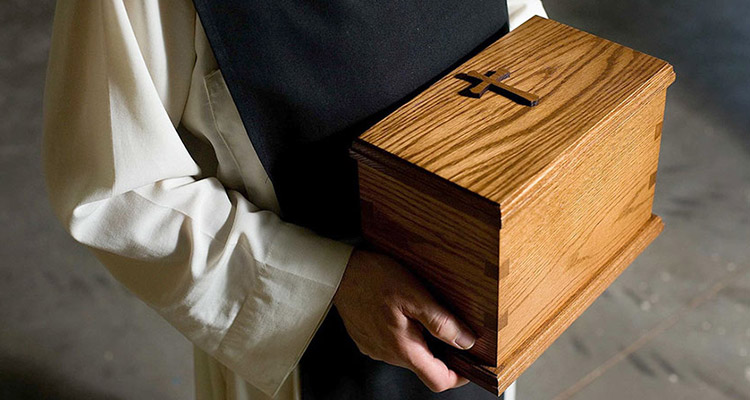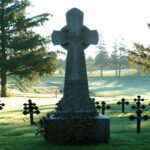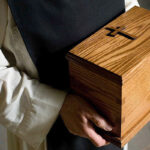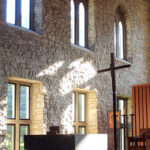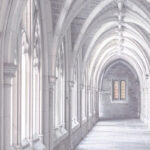For Trappists, death is understood as a natural part of life. The beauty with which God bestows upon the earth is subject to the burden of time. Seasons change, tides rise and fall, morning light dims with night. Such occurrences remind the monks to reverently regard human life in its own cyclical reality, both as treasured and impermanent. In line with teachings of the Catholic Church, monks believe death is not the end of a life, but a step on the path to a new beginning in eternity.
With a connection to and understanding of this balanced order, Trappists embrace a work of craftmanship working with natural resources. They use the bountiful gifts of the earth, such as wood from trees, to create products for the benefit of others. Self-sufficiency in their work allows the monks to continue their hidden life of prayer.
To maintain sustainability, in 1999 New Melleray Abbey launched Trappist Caskets. Together with lay men and women, the monks help handcraft wooden caskets and urns for families across the county. As stewards and caretakes of the grounds, each wooden casket and urn is made from premium, native wood from the monastery’s own forest, and forests within the region.
One does not have to share the Catholic faith in order to purchase a Trappist casket or urn, but the monks will offer their prayers, as each casket and urn is blessed by a monk. The name of the deceased is inscribed in their Memorial book that resides in the Abbey and a Mass of Remembrance is offered. A memorial tree is also planted to commemorate each life that finds rest in a Trappist casket or urn, a hopeful reminder that with death comes new life.
Prayerful simplicity, quiet fellowship, and the work of human hands are cornerstones for the Trappist monks of New Melleray Abbey. They do not require much of the world outside their walls, but they are humbled to give back during a time of mourning and loss. It is an honor to celebrate the circle of life, whether at its precious infancy, earthly conclusion, or heavenly beginning.
Source: “The Trappist Life” (n.d.) retrieved from http://www.trappists.org/
